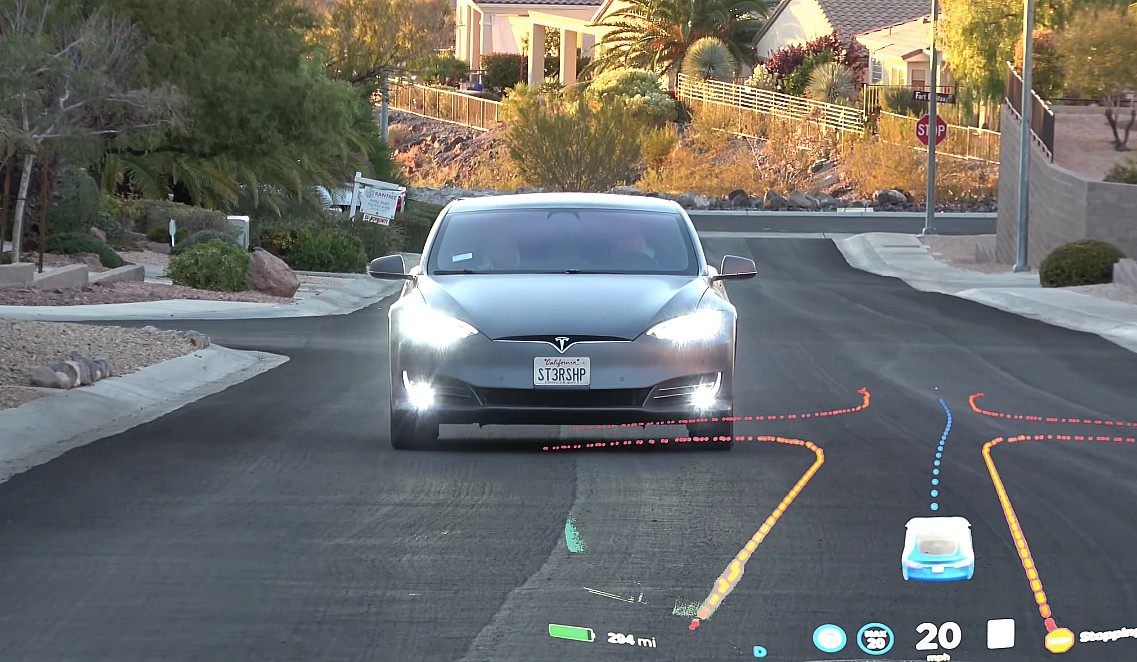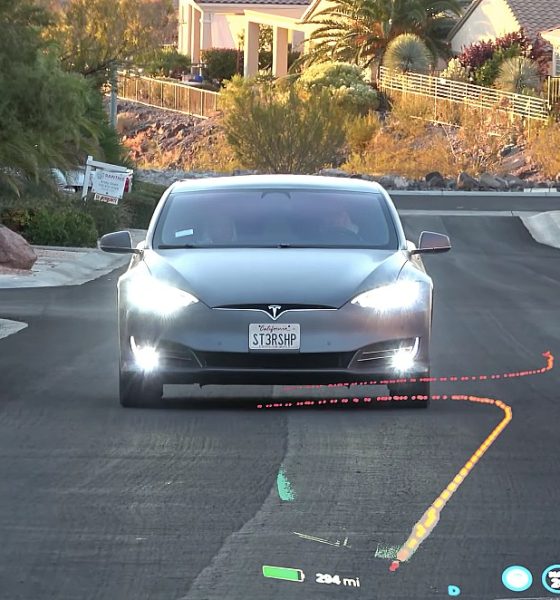

News
Elon Musk shares FSD Beta V9 release update, teases improvements with pure vision approach
Elon Musk recently shared several key updates for Tesla’s upcoming FSD Beta Version 9 release. The highly-anticipated update, which has seen some delays to date, is expected to introduce several critical improvements to the robust driver-assist system.
In a recent set of tweets, Elon Musk explained that Tesla had been focusing on the removal of radar from the FSD Beta, which the CEO notes should present a notable improvement to the performance of the advanced driver-assist suite. Musk’s update was brief, though he mentioned that the FSD Beta V9 release should be ready next week, at least for testers in the United States.
We had to focus on removing radar & confirming safety. That release goes out next week to US production. Then a week or two to polish pure vision FSD & v9 beta will release. Difference between v8 & v9 is gigantic.
— Elon Musk (@elonmusk) May 12, 2021
“We had to focus on removing radar & confirming safety. That release goes out next week to US production. Then a week or two to polish pure vision FSD & v9 beta will release. Difference between v8 & v9 is gigantic,” the Tesla CEO wrote.
Elon Musk has highlighted Tesla’s shift to a pure vision system in recent months. Back in March, the CEO noted that pure vision is the way to “real-world AI.” Musk later explained that vision has “much more precision” than radar, and that cameras have several orders of magnitude more bits/sec than radar. Cameras could then leave behind radar as vision processing improves.
I think we’re maybe a month or two away from wide beta. But these things are hard to predict accurately.
The work we had to do for pure vision driving was needed for FSD, so much more progress has been made than it would seem.
— Elon Musk (@elonmusk) May 12, 2021
Interestingly enough, Elon Musk mentioned that Tesla’s vision-only approach should remove issues like phantom braking, which happens at times when Autopilot encounters a bridge or overpass. He also explained that the FSD Beta V9 expansion should happen a month or two from now. Musk also admitted that the release of the driver-assist system’s wide beta has been quite hard to predict accurately.
“I think we’re maybe a month or two away from wide beta. But these things are hard to predict accurately. The work we had to do for pure vision driving was needed for FSD, so much more progress has been made than it would seem,” Musk said.
End of year, along with FSD, provided we get regulatory approval. Smart Summon is just a subset of FSD.
— Elon Musk (@elonmusk) May 12, 2021
Lastly, Elon Musk provided a quick update on the release of FSD functions in Europe, such as Smart Summon. Musk was optimistic about its release, though he was also quite cautious about its estimated timeframe. That being said, the CEO did note that for Europe, the release of features like Smart Summon should happen alongside the release of FSD, as the driverless function is only a subset of the Full Self-Driving suite.
It remains to be seen if Tesla’s shift to a pure vision approach would allow it to overcome the challenges currently being experienced by Autopilot and the FSD suite. However, the company appears to have been pondering a camera-only system for a while now, as hinted at by a patent published in March which describes a system that uses two neural networks to accurately gauge the distances of objects using only image data.
Don’t hesitate to contact us for news tips. Just send a message to tips@teslarati.com to give us a heads up.

News
Tesla FSD fleet is nearing 7 billion total miles, including 2.5 billion city miles
As can be seen on Tesla’s official FSD webpage, vehicles equipped with the system have now navigated over 6.99 billion miles.

Tesla’s Full Self-Driving (Supervised) fleet is closing in on almost 7 billion total miles driven, as per data posted by the company on its official FSD webpage.
These figures hint at the massive scale of data fueling Tesla’s rapid FSD improvements, which have been quite notable as of late.
FSD mileage milestones
As can be seen on Tesla’s official FSD webpage, vehicles equipped with the system have now navigated over 6.99 billion miles. Tesla owner and avid FSD tester Whole Mars Catalog also shared a screenshot indicating that from the nearly 7 billion miles traveled by the FSD fleet, more than 2.5 billion miles were driven inside cities.
City miles are particularly valuable for complex urban scenarios like unprotected turns, pedestrian interactions, and traffic lights. This is also the difference-maker for FSD, as only complex solutions, such as Waymo’s self-driving taxis, operate similarly on inner-city streets. And even then, incidents such as the San Francisco blackouts have proven challenging for sensor-rich vehicles like Waymos.
Tesla’s data edge
Tesla has a number of advantages in the autonomous vehicle sector, one of which is the size of its fleet and the number of vehicles training FSD on real-world roads. Tesla’s nearly 7 billion FSD miles then allow the company to roll out updates that make its vehicles behave like they are being driven by experienced drivers, even if they are operating on their own.
So notable are Tesla’s improvements to FSD that NVIDIA Director of Robotics Jim Fan, after experiencing FSD v14, noted that the system is the first AI that passes what he described as a “Physical Turing Test.”
“Despite knowing exactly how robot learning works, I still find it magical watching the steering wheel turn by itself. First it feels surreal, next it becomes routine. Then, like the smartphone, taking it away actively hurts. This is how humanity gets rewired and glued to god-like technologies,” Fan wrote in a post on X.
News
Tesla starts showing how FSD will change lives in Europe
Local officials tested the system on narrow country roads and were impressed by FSD’s smooth, human-like driving, with some calling the service a game-changer for everyday life in areas that are far from urban centers.

Tesla has launched Europe’s first public shuttle service using Full Self-Driving (Supervised) in the rural Eifelkreis Bitburg-Prüm region of Germany, demonstrating how the technology can restore independence and mobility for people who struggle with limited transport options.
Local officials tested the system on narrow country roads and were impressed by FSD’s smooth, human-like driving, with some calling the service a game-changer for everyday life in areas that are far from urban centers.
Officials see real impact on rural residents
Arzfeld Mayor Johannes Kuhl and District Administrator Andreas Kruppert personally tested the Tesla shuttle service. This allowed them to see just how well FSD navigated winding lanes and rural roads confidently. Kruppert said, “Autonomous driving sounds like science fiction to many, but we simply see here that it works totally well in rural regions too.” Kuhl, for his part, also noted that FSD “feels like a very experienced driver.”
The pilot complements the area’s “Citizen Bus” program, which provides on-demand rides for elderly residents who can no longer drive themselves. Tesla Europe shared a video of a demonstration of the service, highlighting how FSD gives people their freedom back, even in places where public transport is not as prevalent.
What the Ministry for Economic Affairs and Transport says
Rhineland-Palatinate’s Minister Daniela Schmitt supported the project, praising the collaboration that made this “first of its kind in Europe” possible. As per the ministry, the rural rollout for the service shows FSD’s potential beyond major cities, and it delivers tangible benefits like grocery runs, doctor visits, and social connections for isolated residents.
“Reliable and flexible mobility is especially vital in rural areas. With the launch of a shuttle service using self-driving vehicles (FSD supervised) by Tesla in the Eifelkreis Bitburg-Prüm, an innovative pilot project is now getting underway that complements local community bus services. It is the first project of its kind in Europe.
“The result is a real gain for rural mobility: greater accessibility, more flexibility and tangible benefits for everyday life. A strong signal for innovation, cooperation and future-oriented mobility beyond urban centers,” the ministry wrote in a LinkedIn post.
News
Tesla China quietly posts Robotaxi-related job listing
Tesla China is currently seeking a Low Voltage Electrical Engineer to work on circuit board design for the company’s autonomous vehicles.

Tesla has posted a new job listing in Shanghai explicitly tied to its Robotaxi program, fueling speculation that the company is preparing to launch its dedicated autonomous ride-hailing service in China.
As noted in the listing, Tesla China is currently seeking a Low Voltage Electrical Engineer to work on circuit board design for the company’s autonomous vehicles.
Robotaxi-specific role
The listing, which was shared on social media platform X by industry watcher @tslaming, suggested that Tesla China is looking to fill the role urgently. The job listing itself specifically mentions that the person hired for the role will be working on the Low Voltage Hardware team, which would design the circuit boards that would serve as the nervous system of the Robotaxi.
Key tasks for the role, as indicated in the job listing, include collaboration with PCB layout, firmware, mechanical, program management, and validation teams, among other responsibilities. The role is based in Shanghai.
China Robotaxi launch
China represents a massive potential market for robotaxis, with its dense urban centers and supportive policies in select cities. Tesla has limited permission to roll out FSD in the country, though despite this, its vehicles have been hailed as among the best in the market when it comes to autonomous features. So far, at least, it appears that China supports Tesla’s FSD and Robotaxi rollout.
This was hinted at in November, when Tesla brought the Cybercab to the 8th China International Import Expo (CIIE) in Shanghai, marking the first time that the autonomous two-seater was brought to the Asia-Pacific region. The vehicle, despite not having a release date in China, received a significant amount of interest among the event’s attendees.








